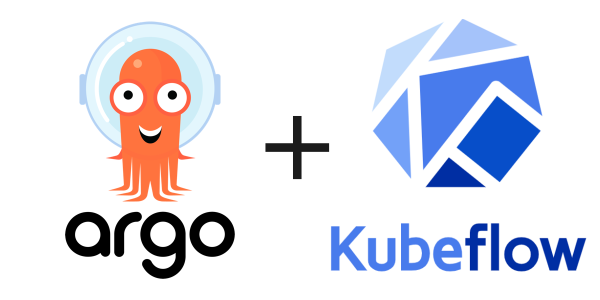
argo template示例
4.argo scripts adsl example
示例1:scripts template
argo adsl支持template steps中执行脚本。
1
2
3
4
5
6
7
8
9
10
11
12
13
14
15
16
17
18
19
20
21
22
23
24
25
26
27
28
29
30
31
32
33
34
35
36
37
38
39
40
41
42
43
44
45
46
47
48
49
50
51
# 脚本只输出执行结果
apiVersion: argoproj.io/v1alpha1
kind: Workflow
metadata:
generateName: scripts-bash-
spec:
entrypoint: bash-script-example
templates:
- name: bash-script-example
steps:
- - name: generate
template: gen-random-int-bash
- - name: print
template: print-message
arguments:
parameters:
- name: message
value: "" # The result of the here-script
- name: gen-random-int-bash
script:
image: debian:9.4
command: [bash]
source: | # Contents of the here-script
cat /dev/urandom | od -N2 -An -i | awk -v f=1 -v r=100 '{printf "%i\n", f + r * $1 / 65536}'
- name: gen-random-int-python
script:
image: python:alpine3.6
command: [python]
source: |
import random
i = random.randint(1, 100)
print(i)
- name: gen-random-int-javascript
script:
image: node:9.1-alpine
command: [node]
source: |
var rand = Math.floor(Math.random() * 100);
console.log(rand);
- name: print-message
inputs:
parameters:
- name: message
container:
image: alpine:latest
command: [sh, -c]
args: ["echo result was: "]
使用script关键字源标记指定脚本主体。将创建一个包含脚本主体的临时文件,然后将临时文件的名称作为最后一个参数传递给command, command是一个执行脚本主体的解释器。需要指明script需要的解释器。 改脚本有输出值的脚本(输出只有结果值)执行完毕后会用一个result 的一个默认的结果字段收集该脚本的输出值,供template流程节点调用。
示例2:output parameters scripts template
上面是直接返回结果的脚本,当然argo srcipts steps支持使用参数输出的的方式提供不同srcipts之间使用依赖参数,甚至的其他元件都可以调用,示例如下。
1
2
3
4
5
6
7
8
9
10
11
12
13
14
15
16
17
18
19
20
21
22
23
24
25
26
27
28
29
30
31
32
33
34
35
36
37
38
39
# 带输出参数供后续工作流程调用的scripts
apiVersion: argoproj.io/v1alpha1
kind: Workflow
metadata:
generateName: output-parameter-
spec:
entrypoint: output-parameter
templates:
- name: output-parameter
steps:
- - name: generate-parameter
template: whalesay
- - name: consume-parameter
template: print-message
arguments:
parameters:
# Pass the hello-param output from the generate-parameter step as the message input to print-message
- name: message
value: ""
- name: whalesay
container:
image: docker/whalesay:latest
command: [sh, -c]
args: ["echo -n hello world > /tmp/hello_world.txt"] # generate the content of hello_world.txt
outputs:
parameters:
- name: hello-param # name of output parameter
valueFrom:
path: /tmp/hello_world.txt # set the value of hello-param to the contents of this hello-world.txt
- name: print-message
inputs:
parameters:
- name: message
container:
image: docker/whalesay:latest
command: [cowsay]
args: [""]
这个template中template模板whalesay使用outputs关键字定义了输出参数hello-param,在模板print-message中通过使用参数hello-param的赋值给message
5.argo retry&limit adsl example
示例1:错误重试
argo adsl提供retryStrategy 关键字来声明重试逻辑,可以给流程定义我们需要重试的机制。
1
2
3
4
5
6
7
8
9
10
11
12
13
14
15
16
17
18
19
20
21
# This example demonstrates the use of retry back offs
apiVersion: argoproj.io/v1alpha1
kind: Workflow
metadata:
generateName: retry-backoff-
spec:
entrypoint: retry-backoff
templates:
- name: retry-backoff
retryStrategy:
limit: 10
retryPolicy: "Always"
backoff:
duration: "1" # Must be a string. Default unit is seconds. Could also be a Duration, e.g.: "2m", "6h", "1d"
factor: 2
maxDuration: "1m" # Must be a string. Default unit is seconds. Could also be a Duration, e.g.: "2m", "6h", "1d"
container:
image: python:alpine3.6
command: ["python", -c]
# fail with a 66% probability
args: ["import random; import sys; exit_code = random.choice([0, 1, 1]); sys.exit(exit_code)"]
重试机制中包含以下几部分:
- limit:最大重试限制次数
- retryPolicy:重试机制,分为OnFailure(失败重试,当工作流执行失败重试)、OnError(出错重试,当工作流执行出现异常触发重试,默认重试规则)和Always(无论是执行出错还是执行失败都触发重试)
- backoff:回退相关,详细内容暂时没有弄明白
注:若配置一个空retryStrategy对象,即retryStrategy:{} 则该工作流所有steps都会一直重试直到整个工作流成功执行完成
示例2:限制执行时间
argo adsl提供activeDeadlineSeconds关键字限制工作流执行时间
1
2
3
4
5
6
7
8
9
10
11
12
13
14
# 该工作流超时时间为10s
apiVersion: argoproj.io/v1alpha1
kind: Workflow
metadata:
generateName: timeouts-
spec:
entrypoint: sleep
templates:
- name: sleep
container:
image: alpine:latest
command: [sh, -c]
args: ["echo sleeping for 1m; sleep 60; echo done"]
activeDeadlineSeconds: 10 # terminate container template after 10 seconds
除了执行时间限制以外,argo也支持其他限制条件,例如文件大小限制,参考:Volumes限制 Volumes部分
6.argo exit handlers adsl example
argo提供退出句柄供我们使用,在工作流中我们应该积极使用退出句柄,退出句柄常用于:
- 对执行完成的workflow进行清理
- 可以将执行完成的workflow结果通过介质途径发送通知,如邮件推送
- 可以将执行完成的workflow结果通过webhook途径发送通知,如消息推送
- 触发重新执行或者调用执行其他的
```yaml
apiVersion: argoproj.io/v1alpha1
kind: Workflow
metadata:
generateName: exit-handlers-
spec:
entrypoint: intentional-fail
onExit: exit-handler # invoke exit-hander template at end of the workflow
templates:
primary workflow template
- name: intentional-fail container: image: alpine:latest command: [sh, -c] args: [“echo intentional failure; exit 1”]
Exit handler templates
After the completion of the entrypoint template, the status of the
workflow is made available in the global variable .
will be one of: Succeeded, Failed, Error
- name: exit-handler
steps:
-
- name: notify template: send-email
- name: celebrate template: celebrate when: “ == Succeeded”
- name: cry template: cry when: “ != Succeeded”
-
- name: send-email container: image: alpine:latest command: [sh, -c] args: [“echo send e-mail: “]
- name: celebrate container: image: alpine:latest command: [sh, -c] args: [“echo hooray!”]
- name: cry container: image: alpine:latest command: [sh, -c] args: [“echo boohoo!”] ```